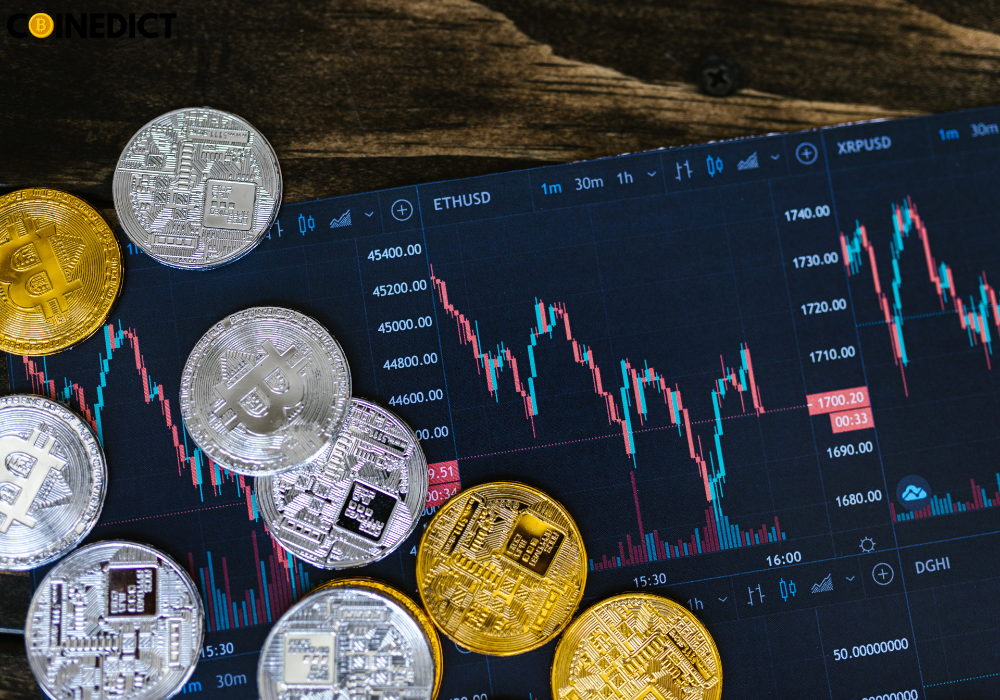Investors have poured $3.51 billion into crypto-focused exchange-traded products (ETPs) over the past month, with a total inflow of $26.6 billion over the past year, as reported by Bloomberg. These significant inflows bring the total assets under management in crypto ETPs to an impressive $93.3 billion, underscoring a growing interest in digital assets among institutional and retail investors.
What Are Crypto Exchange-Traded Products (ETPs)?
Crypto ETPs are investment products that allow investors to gain exposure to digital assets such as Bitcoin, Ethereum, and other cryptocurrencies through a traditional market framework. Unlike directly holding crypto, ETPs are structured to provide price exposure to these assets without requiring investors to manage digital wallets or understand blockchain technology. The primary types of crypto ETPs include:
- Exchange-Traded Funds (ETFs): These track the price of individual or multiple cryptocurrencies and trade on traditional exchanges.
- Exchange-Traded Notes (ETNs): Debt securities tied to the price of cryptocurrencies, providing returns based on the performance of the underlying asset.
- Trusts and Closed-End Funds: Some ETPs are structured as trusts that hold crypto on behalf of investors, providing exposure through a trust share.
ETPs have become popular among institutional investors seeking regulated and transparent access to the crypto market, as well as among retail investors looking for a more straightforward investment approach.
Why Crypto ETPs Are Seeing Strong Inflows
The influx of funds into crypto ETPs signals a rising confidence in digital assets, driven by multiple factors:
1. Growing Institutional Adoption
- Institutions are increasingly interested in crypto as an asset class, with ETPs offering a regulated and more secure entry point. Asset managers, hedge funds, and pension funds have recognized ETPs as a way to diversify portfolios and participate in the potential upside of cryptocurrencies without directly managing the assets.
- Crypto ETPs are considered compliant with financial regulations, which adds to their appeal for risk-conscious institutional investors.
2. Mainstream Financial Acceptance of Crypto
- The steady increase in crypto ETP assets reflects a broader trend of mainstream financial acceptance. Major players like BlackRock and Fidelity have filed applications for Bitcoin ETFs, lending further legitimacy to digital assets.
- The integration of crypto into traditional financial products enables investors to add crypto exposure within familiar investment frameworks, making it easier to adopt.
3. Regulatory Progress in Key Markets
- Regulatory advancements in regions like Europe, North America, and parts of Asia have provided a more stable environment for crypto ETPs. Countries including Canada and Switzerland have been early adopters, allowing Bitcoin and Ethereum ETPs that track spot prices.
- The SEC in the U.S. has yet to approve a spot Bitcoin ETF, but regulatory progress in other regions has spurred demand, as global investors seek regulated access to crypto assets.
4. Diversification and Inflation Hedge Appeal
- Crypto ETPs are increasingly viewed as a diversification tool, offering returns uncorrelated with traditional asset classes like equities and bonds. This has attracted investors seeking hedges against inflation and economic uncertainty.
- Bitcoin and Ethereum, in particular, are being seen as “digital gold,” appealing to investors looking for assets that may retain value in turbulent economic times.
The $93.3 Billion Milestone: A Testament to Crypto’s Growth
The total $93.3 billion managed by crypto ETPs highlights the rapid growth and demand in this space, a stark contrast to the skepticism that once surrounded digital assets. This growth has not only increased asset values but has also drawn attention from traditional financial sectors.
1. Expansion of ETP Offerings
- Crypto ETPs are expanding beyond Bitcoin and Ethereum, with products covering a range of digital assets, from Solana and Cardano to DeFi-focused ETPs and thematic products that include multiple cryptocurrencies.
- Specialized crypto products, such as those focused on blockchain technology or metaverse investments, are attracting investors interested in the broader applications of digital assets beyond currency.
2. Increased Liquidity and Market Maturity
- The growth in ETP assets has improved liquidity in the crypto market, reducing price volatility and enhancing market stability. With more capital flowing in, the crypto market benefits from deeper liquidity and greater price resilience.
- The maturity of the ETP market also signals growing investor sophistication, as crypto assets transition from speculative holdings to structured, tradable financial products.
Challenges and Future Prospects for Crypto ETPs
Despite the positive inflows, the crypto ETP sector faces several challenges, primarily related to regulatory uncertainties, market volatility, and investor education.
1. Regulatory Uncertainty in the U.S.
- While Canada and Europe have made significant strides in approving crypto ETPs, the U.S. SEC has not yet approved a spot Bitcoin ETF. The regulatory delay has held back some U.S. investors from accessing these products through American exchanges.
- Continued uncertainty in major markets could slow down the growth of crypto ETPs, especially in regions where regulations remain strict or unclear.
2. Volatility and Market Risk
- Cryptocurrencies are known for their high volatility, which can impact ETP performance. While volatility attracts short-term traders, it can deter long-term investors who are risk-averse.
- In response, some ETPs have started incorporating risk-management strategies, such as derivatives or diversified crypto baskets, to mitigate price swings and appeal to conservative investors.
3. Investor Education and Awareness
- As crypto ETPs grow in popularity, education around their structure, risks, and rewards is essential. Investors new to crypto need to understand the differences between traditional assets and digital assets, as well as the risks associated with both direct and indirect crypto investments.
- Education initiatives, led by financial institutions and market regulators, will be key to making crypto ETPs accessible and understandable for the broader investing public.
Conclusion: A Booming Market with Bright Prospects
With $3.51 billion added in just the past month and $26.6 billion over the past year, crypto ETPs are quickly establishing themselves as a vital link between traditional finance and the emerging digital asset ecosystem. The current $93.3 billion managed by crypto ETPs illustrates the growing mainstream interest in digital assets and reflects a more mature, institutional approach to crypto investing.
As regulatory frameworks continue to evolve and investor interest grows, the future of crypto ETPs looks promising. Whether driven by the appeal of diversification, inflation hedging, or simple curiosity, crypto ETPs are likely to become a staple in investment portfolios worldwide, bridging the gap between conventional financial markets and the rapidly evolving world of digital assets.











